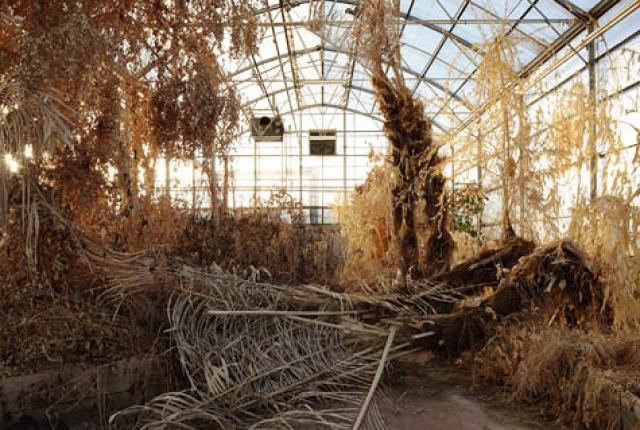Built in the 1990s in Arizona, Biosphere 2 was a sealed and self-contained ecological world that was to house a team of researchers during two closures. But even controlled environments can’t really be controlled. Disputes over financial management led to the early termination of Biosphere 2 in 1994, and ownership of its remants have changed hands several times, as if it were a failed department store. From a 1996 New York Times article by William J. Broad about Columbia University taking over Biosphere for a spell, at a time when it lay dormant, a domicile only to exotic ants:
The exotic species of ant known as Paratrechina longicornus, or the crazy ant, named for its speedy and erratic behavior when excited, somehow managed to kill off all the other ants over the years, as well as the crickets and grasshoppers.
Swarms of them crawled over everything in sight: thick foliage, damp pathways littered with dead leaves and even a bearded ecologist in the humid rain forest of Biosphere 2, an eight-story, glass-and-steel world in the wilds of the Sonora Desert that cost $200 million to build.
“These little guys pretty much run the food web,” Dr. Tony Burgess, the ecologist, said as he tapped a dark frond, sending dozens of the ants into a frenzy. ”Until we understand the ecology, we’re reluctant to eliminate them.”
Columbia University, an icon of the Ivy League, is struggling to turn a utopian failure into a scientific triumph.
The university took over management of Biosphere 2 in January and is starting to reveal just how badly things went awry when four men, four women and 4,000 species of plants and animals were sealed inside this giant terrarium for a two-year experiment that ended in 1993.
The would-be Eden became a nightmare, its atmosphere gone sour, its sea acidic, its crops failing, and many of its species dying off. Among the survivors are crazy ants, millions of them.•
_____________________________________
Biosphere 2, before its fall:
Jane Poynter recalls living in Biosphere 2, at TED:
Tags: Jane Poynter


